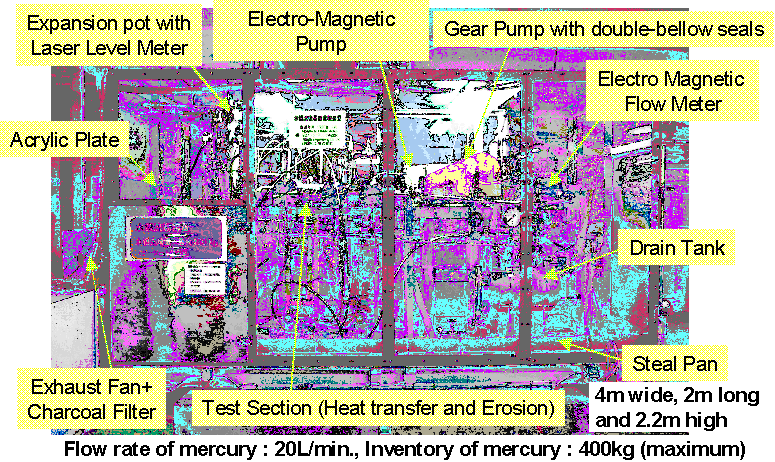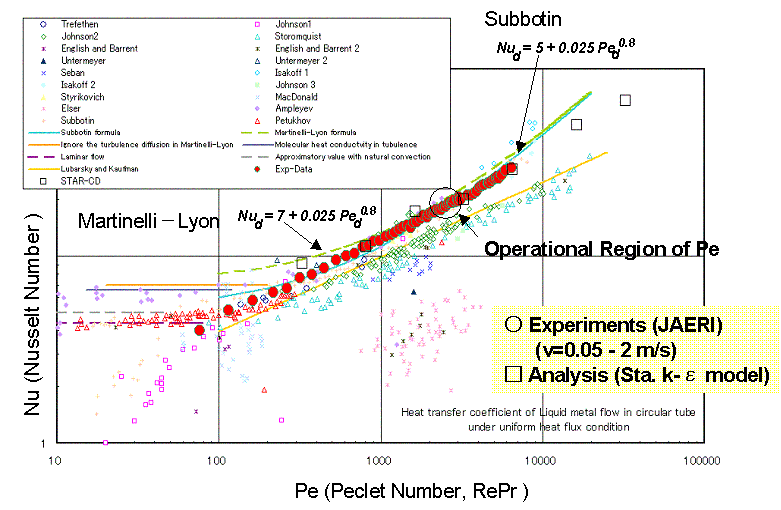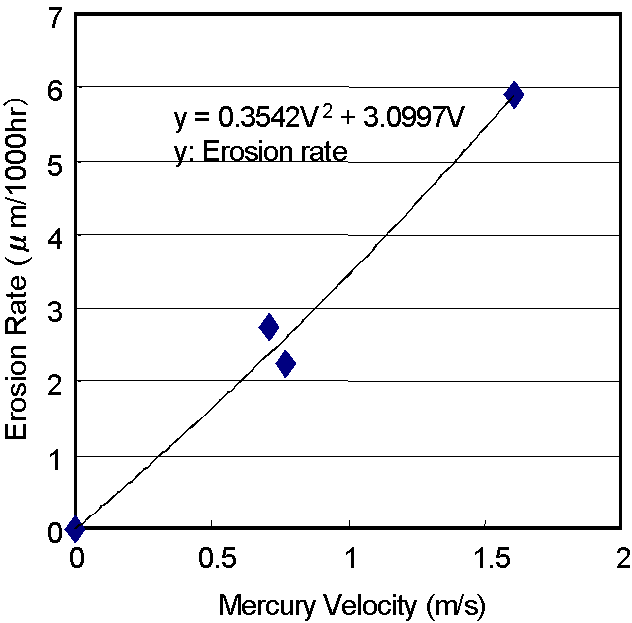Mercury Test Loop Experiments
@
- Over View of JAERI Mercury Test Loop
- Experimental Results of Wall Friction Factor
- Comparison between Experimental and Analytical Results of Dimensionless Heat Transfer Coefficients (Nu)
- Erosion Tests Using the JAERI Mercury Test Loop - Outer view of the test section -
- Relationship between Average Erosion Rate and Mercury Velocity Obtained with Straight Pipes
@
The mechanical gear pump has showed much better performance on the mercury circulation than the EM pump.
The gear pump is to be used in the practical mercury circulation system.

@
@
Wall friction factors increase with an increase of the operating hours of the mercury loop.
@«
This is caused by the change of surface conditions between the piping and the mercury.
At the beginning of the experiment, the surface was not wetted well and the mercury flow caused some erosion of the piping as well as removing the oxidized membrane of the piping.
@«
The surface condition was changed from non-wetted to wetted after 12 hour operation.

The practical mercury circulation system is to be operated for more than 12 hours before the proton beam injection in order to ensure the wetted condition.
Comparison between Experimental and Analytical Results of Dimensionless Heat Transfer Coefficients (Nu)
@
We can predict Nu well with 1.5 of Prt (derived with the empirical correlation by Kasagi et al.)

Erosion Tests Using the JAERI Mercury Test Loop - Outer view of the test section -@

Relationship between Average Erosion Rate and Mercury Velocity Obtained with Straight Pipes@
Tests period:
2000hrs under 0.7m/s
1000hrs under 1.6m/s.
«
Based on the empirical correlation, the average decrease of wall thickness after 4000hr operation (one-year operation time of the facility) was estimated to be only 14Êm under 1m/s of mercury velocity.
«
Erosion could not affect the mechanical strength of the thin-walled beam window of 2.5mm thick.

Wall thickness was measured every 1000 hours with an ultra sonic gage whose resolution is 1Êm.